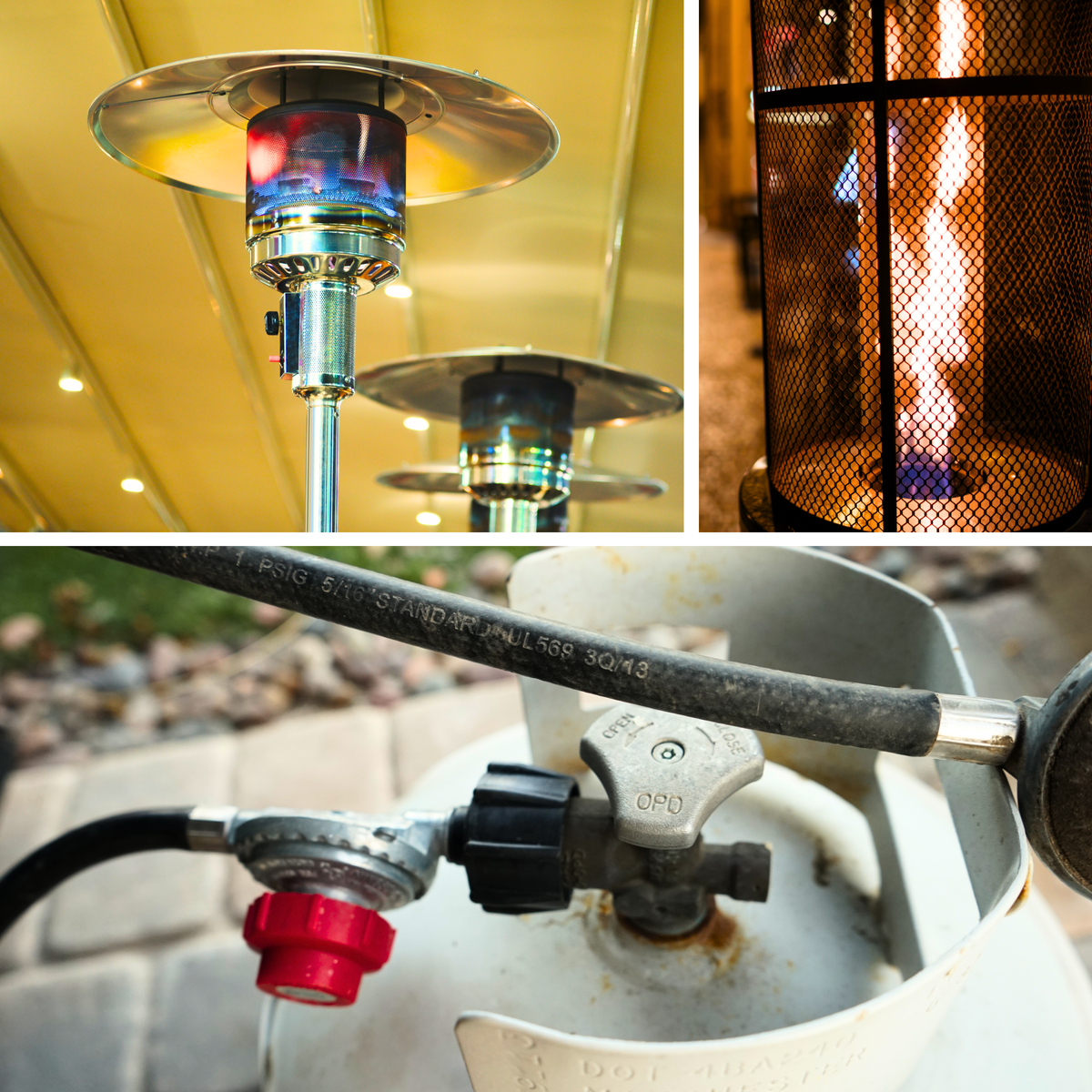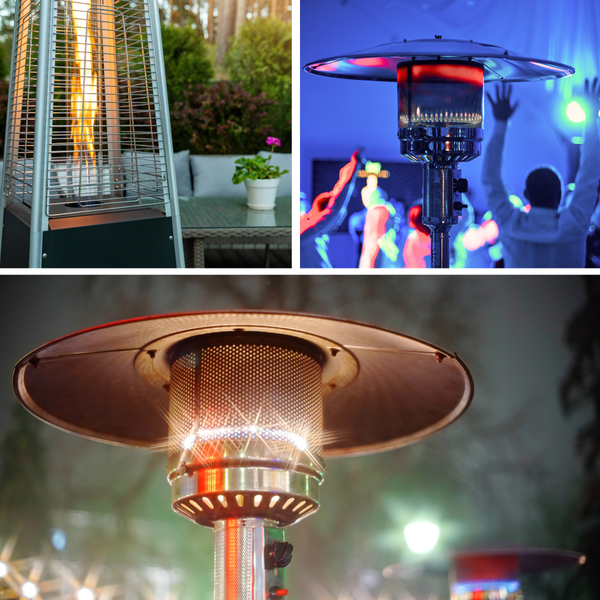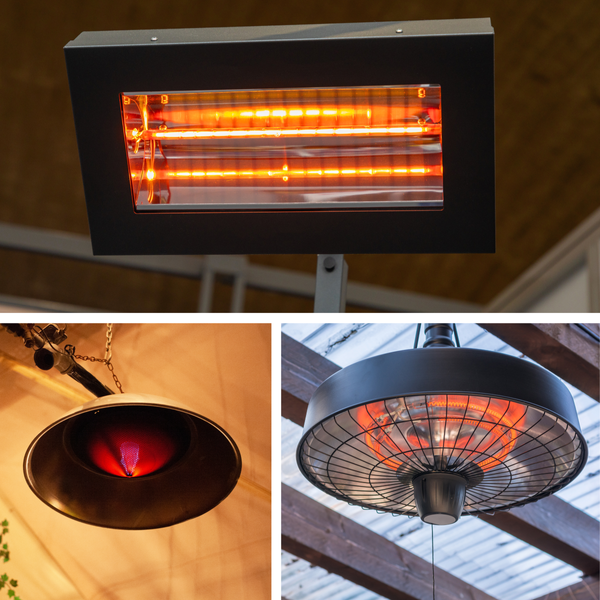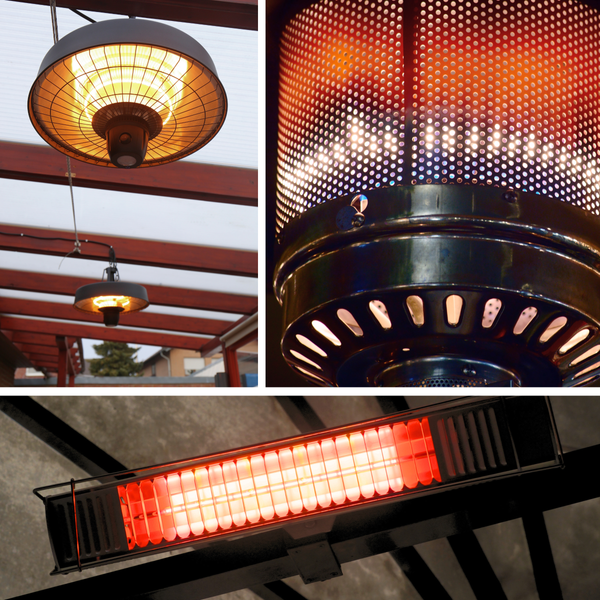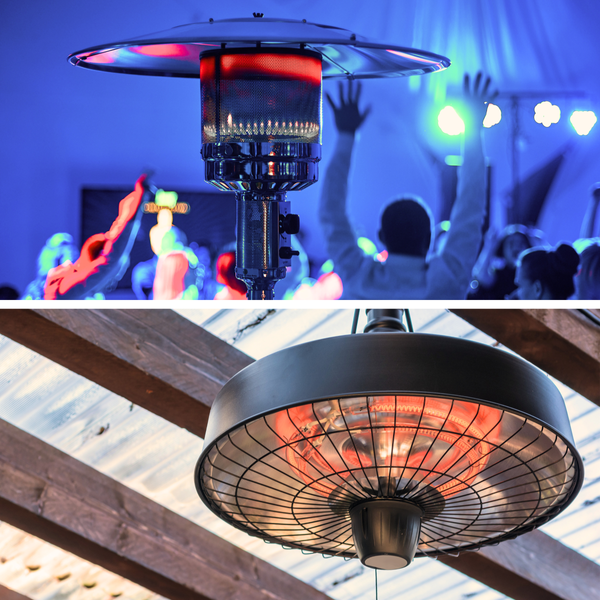Outdoor living spaces have become essential extensions of our homes, especially when the temperature drops and we still want to enjoy the fresh air. Patio heaters have become a popular solution to extend the comfort of our homes to the outdoors. Among the various types of patio heaters, propane patio heaters are a common choice for many homeowners. But a question often arises: do patio heaters use a lot of propane? Let's dive into the details to understand propane heater usage, efficiency, and cost.
Key Takeaways:
- Understanding the propane usage of patio heaters is crucial for cost and efficiency.
- Propane heaters are rated by British Thermal Units (BTUs) which determine their heat output and propane consumption.
- Maintenance and proper usage can significantly affect the longevity of your propane supply.
What Determines Propane Usage in Patio Heaters?
Propane patio heaters are designed to provide warmth by burning propane gas to produce radiant heat. The amount of propane used by these heaters is influenced by several factors, including the heat output measured in British Thermal Units (BTUs), the efficiency of the heating element, and the heat setting selected by the user. A higher BTU rating typically means more propane consumption, but it also means a larger area can be heated.

Heat Output and Propane Consumption
The heat output of propane patio heaters is a key factor in determining how much propane they will use. A standard patio heater with a 40,000 BTU rating can consume approximately one pound of propane per hour. Therefore, a standard 20 pound propane tank could last about 20 hours on a high setting. It's important to note that actual usage may vary based on the specific model and efficiency of the heater.
Size Matters: Choosing the Right Patio Heater
When selecting a propane patio heater, it's essential to consider the size of the outdoor space you wish to heat. Size patio heaters are available in various sizes and heat outputs to accommodate different square footage. A small tabletop heater will use less propane compared to a full-sized, free-standing model. Choosing the right size will ensure you're not using more propane than necessary.
Efficiency of Propane Heaters
Propane heaters are generally considered to be efficient in terms of fuel usage. However, the efficiency can be affected by factors such as wind conditions and whether the area protected from the elements. In windy conditions, more propane may be required to maintain the desired temperature. Additionally, heaters with higher efficiency ratings will use less propane to produce the same amount of heat.

Propane vs. Electric Patio Heaters
When comparing propane patio heaters to electric heaters, it's important to consider the differences in cost, convenience, and heat output. Electric patio heaters are low maintenance and can be more cost-effective in terms of energy consumption. However, they often require a dedicated power source and may not provide the same level of warmth as propane heaters, especially in larger outdoor spaces.
The Convenience of Propane Heaters
Propane patio heaters offer the convenience of portability since they don't require a fixed gas line or electrical outlet. This allows for flexibility in arranging your outdoor space. Additionally, spare propane tanks ensure that you can easily replace an empty tank and continue enjoying your heated outdoor area without interruption.
Safety Features to Consider
When using propane heaters, safety features are paramount. Look for models with a safety tilt valve that will shut off the gas flow if the heater tips over. It's also important to keep the heater in a well-ventilated area and away from flammable materials. Always follow the manufacturer's instructions and consult the local fire department if you smell gas or suspect a leak.
Propane Patio Heater Usage: How Much Will You Need?
When considering a propane patio heater, one of the first questions that come to mind is how much propane will you need? A standard 20-pound propane tank can typically fuel a patio heater for about 10 hours when the heater is run at full capacity. However, this can vary based on the specific model and its efficiency. If you're planning to use your heater for extended periods, it's essential to have an extra tank on hand to ensure your outdoor comfort isn't interrupted.
Propane patio heater usage is also influenced by the heater's settings. If you're using a heater with a control knob, you can adjust the flame and, consequently, the amount of propane consumed. On lower settings, your propane will last longer, but the trade-off is less heat output. It's a balancing act between comfort and propane usage. For those who love to entertain outdoors or simply enjoy their patio space, understanding this balance is key to optimizing your propane usage.

Integrating Propane Heaters with Other Outdoor Appliances
For those who love outdoor living, integrating a propane patio heater with other appliances like BBQ grills and fire pits can create a seamless entertainment experience. Many outdoor enthusiasts opt for a unified fuel approach, using propane as a common source for their appliances. This not only simplifies fuel storage but also ensures that you can easily switch between heating and cooking without missing a beat.
However, it's important to remember that each appliance, including your new patio heater, will draw from the same pound propane tank, which can be time-consuming if you're frequently switching between them. To avoid running out of propane during your backyard bash, consider dedicating a separate tank for your space heater and another for your grilling needs. This way, you can ensure that your guests stay warm while the steaks are sizzling without any interruption.
Maintenance and Care for Longevity
Regular maintenance can help extend the life of your propane patio heater and ensure it's working properly. This includes checking for blockages in the gas lines, ensuring the pilot light is functioning correctly, and keeping the heating element clean. Proper care will not only keep your heater running efficiently but also help you save on propane usage.
Weather and Propane Usage
Weather conditions can significantly impact how much propane your patio heater uses. During cold winter months, you may find that the heater needs to run on a higher heat setting to maintain a comfortable temperature, thus using more propane. Conversely, in milder conditions, a lower setting may suffice, conserving your fuel supply.
Propane Tank Storage and Safety
It's crucial to store propane tanks correctly to ensure safety and preserve the fuel. Tanks should be stored upright in a cool, shaded area and never left in direct sunlight. Additionally, spare tanks should be kept away from any source of heat or open flame. Always handle propane tanks with care and replace them if they show signs of damage or wear.

Calculating Propane Costs
To estimate the cost of running your propane patio heater, you'll need to consider the price of propane per pound and the heater's consumption rate. By multiplying the cost per pound by the number of pounds used per hour, you can calculate the hourly expense. Keep in mind that prices for propane can fluctuate based on market conditions and location.
Propane Heater Usage Tips
To maximize the efficiency of your propane patio heater, consider using it only when necessary and turning it off when your outdoor space is not in use. Additionally, using a heat setting that's appropriate for the temperature can help conserve propane. A lower setting on milder nights can provide sufficient warmth without excessive fuel consumption.
When to Choose Natural Gas Patio Heaters
For those with access to natural gas lines, natural gas patio heaters can be an alternative to propane models. These heaters are typically more cost-effective in the long run since natural gas is generally cheaper than propane. However, they require professional installation and are not portable like propane heaters.
The Environmental Impact of Propane Heaters
Propane is considered a clean-burning fuel, producing fewer emissions compared to other fossil fuels. This makes propane patio heaters an environmentally friendly option for outdoor heating. They do not produce the toxic by-products associated with coal or oil, making them a responsible choice for those concerned about their carbon footprint.

Summary
Propane patio heaters are a popular choice for extending the usability of outdoor spaces during cooler weather. While they do consume propane, the amount used can vary based on the heater's BTU rating, efficiency, and the heat setting. By choosing the right size heater, maintaining it properly, and using it wisely, you can enjoy a warm outdoor space without excessive propane consumption.
FAQ Section
Q: How long can a 20 lb propane tank last with a patio heater?
A: A 20 lb propane tank can last approximately 20 hours when used with a standard patio heater set on high, assuming a heat output of 40,000 BTUs per hour. Usage time may vary based on the heater's efficiency and the heat setting.
Q: Are propane patio heaters safe to use?
A: Yes, propane patio heaters are safe when used according to the manufacturer's instructions. It's important to ensure they are placed in a well-ventilated area, away from flammable materials, and to use models with safety features like a tilt shut-off valve.
Q: Can propane patio heaters be used indoors?
A: No, propane patio heaters are designed for outdoor use only. Using them indoors can lead to a build-up of carbon monoxide, which is dangerous. Always use propane heaters in an open, well-ventilated outdoor space.



